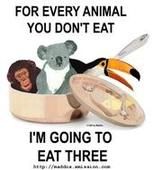Hopefully congress can get this fixed by summer... I was planning on getting my son a dirt bike for his birthday...
any guesses on how much kids bikes will cost once the third party approvals are finished...
 click here for story
click here for story Lead law throttles youth powersports
By William M. Welch, USA TODAY
IRVINE, Calif. — A new federal law aimed at protecting children from lead in toys has also forced a nationwide halt in sales of off-road motorcycles and recreational vehicles built for young riders, killing off a multimillion-dollar industry that was thriving despite the recession.
Thousands of powersports dealers were told to halt sales of vehicles designed for children 12 and younger because of new lead restrictions in an act of Congress that took effect Feb. 10.
Even used vehicle sales are banned by law passed in response to lead found in toys imported from China.
"We're out of business as far as the youth market goes," says Rick Rizzon, owner of Rizzon Cycle in Middlesex, N.J. "It's crazy."
With the motor vehicle industry already hurting from recession, he said the ban means a 20% drop in sales of youth off-road motorcycles and the parts business for bikes already sold.
The ban hits California especially hard. Off-roading is hugely popular among families in the state and several state parks are devoted to dirt riding.
Kevin Matty, finance director at Temecula Motorsports in Temecula, Calif., (where the desert is a big draw for dirt bikers) estimates the ban will wipe out half of his business sales.
"I thought it was a joke," Matty said, until the manufacturers told him he had to take the youth vehicles off the showroom floor.
Economic repercussions
Passed by Congress after a series of reports concerning toys made in China with lead, the law bans sale of products aimed at children if they contain more than 600 parts per million of lead, says Joseph Martyak, chief of staff to the acting chairman of the U.S. Consumer Product Safety Commission.
Lead is found in steel and other metal alloys in the frame, motor and multiple other parts, said Paul Vitrano, general counsel for the Motorcycle Industry Council. The lead strengthens the metals and resists corrosion.
Supporters of the law hailed its passage in August.
Rep. John Conyers, D-Mich., a bill co-sponsor, said at the time that supporting the law "is a vote for industry accountability, regulatory integrity, and most importantly, child safety."
Martyak said the wording of the law left the commission no choice but to enforce the ban on youth cycles and ATVs even with no evidence children would ingest or absorb the items. The industry has petitioned the commission for an exemption.
The ban will have repercussions economically.
The Motorcycle Industry Council estimates nearly 100,000 youth bikes were sold in the USA in 2008, though some were aimed at kids 13 and older and not covered by the ban. Dealernews, an industry trade publication, estimates that the value of inventory at U.S. dealers that can no longer be sold probably exceeds $100 million.
Beyond current inventory, Kawasaki spokeswoman Jan Plessner said the company has "millions and millions of dollars" worth of parts now in the product pipeline to dealers that cannot be sold.
Most cycles and ATVs are made overseas, but there are tens of thousands of jobs attached to the industry here. More than 13,000 powersports dealers sell products in the United States, according to the Motorcycle Industry Council, employing an estimated 124,000 people. Vitrano says the industry estimates the retail market value for all off-road cycles and ATVs is $14.5 billion a year, including sales, service, parts, accessories and payroll.
'Are you kidding?'
Children appeared perplexed by the ban.
"Are you kidding? This is silly," says Zack Bartell, 12, who was taking a dirt-bike riding lesson at School for Dirt's track next to Kawasaki Motors' U.S. headquarters here. "There's no way I'm going to stick a motorcycle part in my mouth."
The 12-and-under market is a huge focus for the industry because it believes children who ride will grow up to be adult riders and consumers as well. It builds bikes with single-cylinder motors as small as 50cc that fit children.
Children as young as Karsyn Boyd, who said she was "6 and a quarter," were riding with ease after an hour or so of instruction, carving figure eights, traversing hills and cutting around orange cones.
Vitrano says the ban will have a perverse effect: Rather than no longer riding, kids who can't get a cycle their size may hop on a bike made for older children or adults — one inappropriate and dangerous for a smaller child.
Terry Dempsey, sales manager at Long Beach Motorsports in Long Beach, Calif., said he sold $120,000 worth of youth bikes last year, plus more in parts, service and accessories.
"We're already down 30% (from recession), and now we just lost another 10% to 15% of our customer base," Dempsey says.
The economy notwithstanding, enthusiasts say the ban needlessly kills a family-oriented sport where children ride with their moms and dads and, like other sports, can induce children to behave.
"I know if I keep my grades up, I can keep riding," says Zack, who started riding at age 5.


















 Previous Topic
Previous Topic Index
Index

